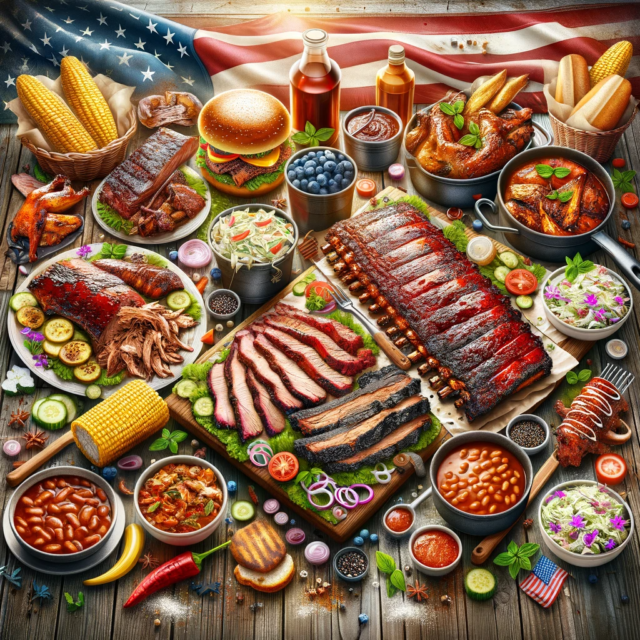A Culinary Exploration of American Barbecue
Barbecue in the United States is more than just a meal; it encapsulates a rich history and cultural diversity that mirrors the nation itself. From the smoky scents wafting from cinder block establishments to exquisite dishes served at upscale eateries, barbecue has evolved significantly over centuries while remaining a cherished culinary tradition.
The term “barbecue” embodies both action and art, invoking images of succulent meats—whether a messy pull-apart pork sandwich, a carefully sliced brisket, or tantalizing smoked wings. The roots of American barbecue trace back to the 17th century, where enslaved Americans in the South utilized Indigenous, European, and African cooking methods to create a distinct style that remains beloved today.
The Roots and Evolution of Barbecue
Dr. Howard Conyers, a South Carolina aerospace engineer and barbecue historian, reflects on how this unique cooking style was forged through necessity. “Barbecue required the hands and minds of enslaved Americans,” he notes, emphasizing the innovation driven by limited resources. Whole animals were often cooked in trenches filled with hot coals, resulting in large quantities of food suitable for gatherings even without refrigeration.
As barbecue moved westward with the Great Migration and adapted to urban settings, the flavors and techniques continued to evolve. Pork shoulders and ribs gradually replaced whole animals, and sauces transitioned from vinegar-based to sweeter tomato variations.
| Region | Signature Dish | Key Ingredients |
|---|---|---|
| North & South Carolina | Whole Hog | Vinegar sauce, Paprika |
| Alabama | Smoked Chicken with White Sauce | Vinegar, Lemon, Mayonnaise |
| Florida | Smoked Fish | Mullet, Oak Smoke |
| Texas | Brisket | Post Oak, Ribs |
| Memphis | Smoked Bologna | Mustard, Coleslaw |
| Kansas City | Ribs and Burnt Ends | Molasses, Tomato-Based Sauce |
| St. Louis | Grilled Ribs | Sweet Sauce, Brown Sugar |
Regional Variations of Barbecue
Each region in the US boasts its own barbecue traditions that reflect local ingredients and cultural influences. North and South Carolina are famous for their whole hog approach and distinctive vinegary sauces. Meanwhile, Alabama’s barbecue is characterized by its unique mayonnaise-rich white sauce for smoked chicken—a technique pioneered by Big Bob Gibson in 1925.
In Texas, barbecue is often measured by its brisket—a highly-prized cut that shines without the need for sauce. The barbecuing craft in this area has evolved through the cultural influences of various immigrant groups.
Emerging trends in American barbecue are being shaped by a new generation of chefs who bring global flavors into traditional practices. Restaurants like King BBQ in Charleston, SC, exhibit a unique blend of Chinese flavors with Southern barbecue techniques, illustrating how culinary boundaries continue to expand.
As the landscape of American barbecue evolves, its roots in history and tradition remain vital, offering an ever-changing tapestry of flavor and cultural expression that continues to delight and surprise.














